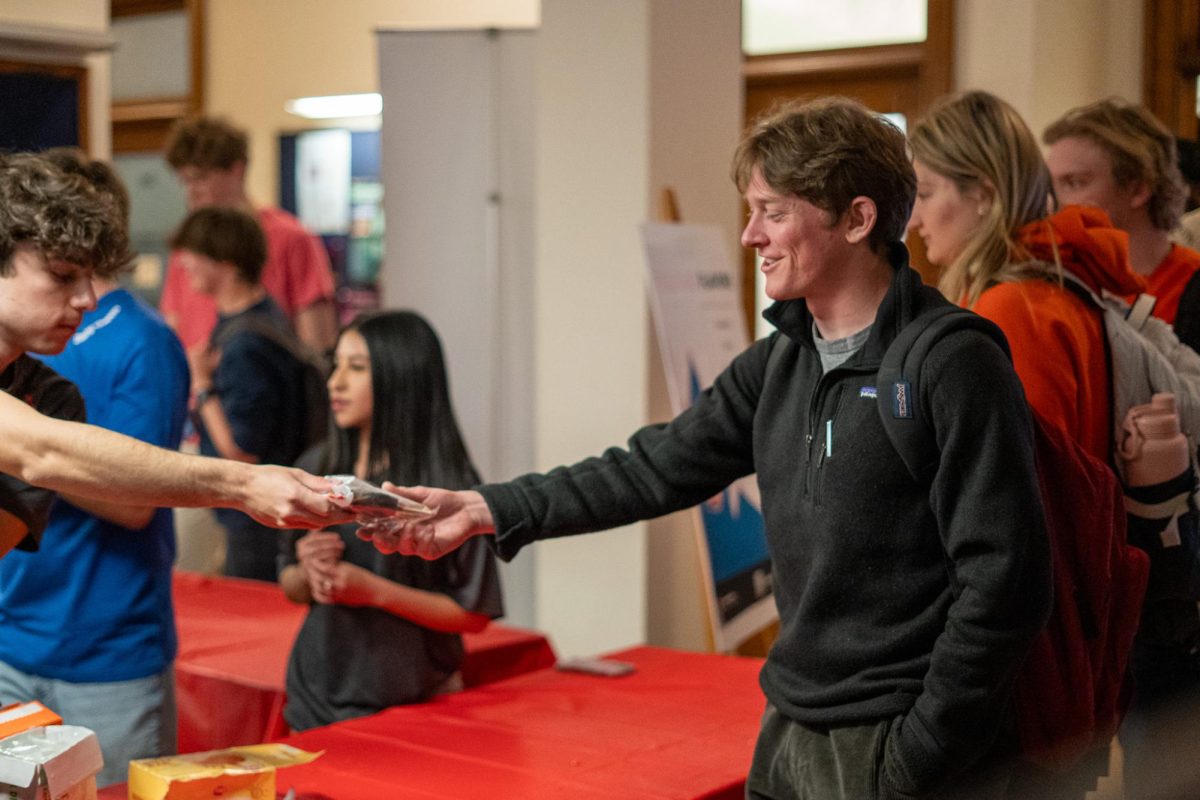You didn’t need to be a scientist, physicist or chemist to attend a nontechnical talk on the physics of climate change, given Oct. 1 by Scott Willenbrock, professor of physics.
The lecture was part of this semester’s Saturday Physics for Everyone series at the Loomis Laboratory. Despite the lecture’s overlap with the Homecoming football game, it still drew a crowd of about 200 people, ranging from children and high school students to undergraduates and older community members.
The lecture series’ goal is to educate the general public in a welcoming manner.
“We think it’s important because our society is so technical and so heavily based on advances in science and engineering technology that we kind of reach out to the public and help them understand some of these issues,” said Kevin Pitts, the Physics department’s associate head for undergraduate programs.
Pitts said a science background is not needed for the country’s policy makers, but they still need to understand enough to make decisions based on scientific research.
Get The Daily Illini in your inbox!
“We try to make it very visual and help people understand what is going on,” he said.
Willenbrock’s presentation explored the basic concepts at the core of the issue of climate change. He presented factual information about the history of the Earth’s climate but did not take a stance on whether human activity is causing the change. Instead, he said he hoped to present the scientific facts behind the issue and allow the audience to use this knowledge to form their own conclusions.
On the subject of the diminishing polar ice caps, Willenbrock posed a question for the audience.
“Can I prove to you that it’s our emissions that are responsible?” Willenbrock asked. “No, there’s no proof of that.”
He went on to assert that this belief is reasonable, but that opposing views can be reasonable, as well.
While the cause of climate change may be uncertain, the current condition of the Earth is not, Willenbrock said. Presently, the Earth’s temperature and carbon dioxide levels are no different than what they have been at various points throughout history.
“The concern is not that things are bad now,” Willenbrock said. “The concern is that things are going to get much worse.”
One reason for this belief is that the present Earth temperatures are exceeding those predicted by past computer models, he said.
While this may seem alarming, Willenbrock said it does not mean that combatting climate change is a lost cause.
“We are not doomed,” he said. “There is so much we can do, but we are not doing enough.”
Everett Vacek, freshman in LAS, said he was pleased with the lecture’s ability to reach younger audiences and those without any prior scientific background. While he said he would have preferred to hear about more in-depth aspects of climate change, he found the presentation overall to be beneficial.
“(The lecture was) really good … because science is a lot of times viewed as something that’s boring in class,” he said.








